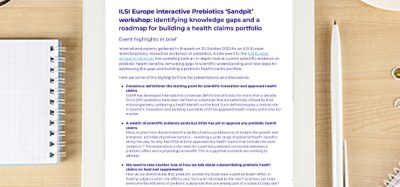USP launches new Food Fraud Database to support increased FDA food safety regulations
- Like
- Digg
- Del
- Tumblr
- VKontakte
- Buffer
- Love This
- Odnoklassniki
- Meneame
- Blogger
- Amazon
- Yahoo Mail
- Gmail
- AOL
- Newsvine
- HackerNews
- Evernote
- MySpace
- Mail.ru
- Viadeo
- Line
- Comments
- Yummly
- SMS
- Viber
- Telegram
- Subscribe
- Skype
- Facebook Messenger
- Kakao
- LiveJournal
- Yammer
- Edgar
- Fintel
- Mix
- Instapaper
- Copy Link
Posted: 5 August 2016 | Roy Manuell | 1 comment
The new Food Fraud Database release from the U.S. Pharmacopeial Convention (USP) will seek to increase brand protection and support FDA regulations on food safety in strong step towards assessing the hazards potentially present in specific food supply chains.


The U.S. Pharmacopeial Convention (USP) has launched today the next generation of its Food Fraud Database (FFD 2.0) to help food manufacturers and retailers make informed decisions about ingredients in their portfolio that may have a greater potential of being adulterated. The goal is to provide brand protection, increase consumer trust and support new food safety regulations recently finalised by the U.S. Food and Drug Administration (FDA).


Food fraud, also referred to as economically-motivated adulteration (EMA), is a global economic and public health problem, costing industry an estimated 10 to 15 billion dollars annually and affecting as much as 10% of the global food supply.
Todd Abraham of Mondelēz International and a member of USP’s Board of Trustees notes:
“Consumers today are more educated than ever, and manufacturers risk doing irreparable damage to their brands as a result of food fraud. The Food Fraud Database 2.0 provides food manufacturers with the ability to look at past incidents of fraud and take proactive steps to protect their supply chains – thus protecting their reputation and ensuring consumer confidence in their products.”
Another advantage of USP’s FFD 2.0 is in supporting compliance with new regulatory requirements from the FDA related to food safety. The Food Safety Modernisation Act (FSMA) requires food manufacturers and retailers to identify and analyse potential hazards including those resulting from EMA as part of their food safety plans. The FFD 2.0 provides hazards reports on specific adulterants, making it easier for manufacturers and retailers to quickly identify ingredients with a known history of adulteration with potentially hazardous substances. The Global Food Safety Initiative (GFSI), an industry-driven initiative providing guidance on food safety management systems, has similar requirements to conduct food fraud vulnerability assessments and develop control plans.
Jeffrey Moore, Ph.D., science director for the food program at USP describes the process:
“Substances used to adulterate food can include industrial dyes, plasticisers, allergens, or other substances not intended to be consumed by people. Smart mitigation of risks starts with reliable data, and the Food Fraud Database 2.0 is a first good step towards assessing the hazards potentially present in specific food supply chains.”
This update of the database – considered the largest collection of food fraud records in the world –includes not only thousands of ingredients and related adulterants, but also incident reports, surveillance records and analytical methods gathered from scientific literature, media publications, regulatory records, judicial records and trade associations around the world. New features in FFD 2.0 allow users to identify historical trends and vulnerabilities through a customisable dashboard, which can include automatic alerts of new records of food fraud and automated analytics for ingredients of interest.
Jonathan W. DeVries, Ph.D., Chair of USP’s Expert Committee on Food Ingredients states:
“With data informed by scientists and food fraud experts from academia, industry and regulatory agencies, the new database offers even better coverage of the historical information on instances of food fraud.”
USP’s Expert Committees are responsible for developing and revising USP’s quality standards and related tools, drawing upon the combined experience and expertise of their individual members. Dr. DeVries further adds:
“The best way to increase your chances of preventing the next food fraud incident in your supply chain is to make use of the database and other tools USP’s Expert Committee has worked on to fight food fraud in a more holistic approach. These resources together offer manufacturers and retailers an arsenal of tools to protect their brand, comply with the regulations and increase public confidence.”








Dear sir,
how can I get these database USP’s FFD2 of food fraud, please?
How can you help me please?
Kind regards,
Moawiya Haddad, PhD in food technology